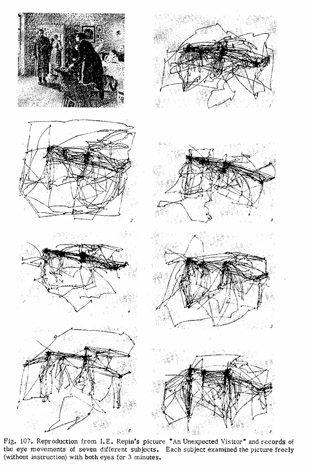
The Cloud Lab at the Columbia University Graduate School of Architecture, Planning & Preservation
An experimental lab that explores the design of our environment through emerging technologies in computing, interface and device culture.
The Lab | Projects & Events | Downloads | People
Using DIY eye-tracking to understand spatial decision making
The Cloud Lab implemented the EyeWriter DIY eye tracking system to question and quantify the relationship between the eyes and the observed world. Using Processing.org to model and visualize the interaction between the eye tracking hardware and 3D scenes, the goal of this research is to understand the complex interplay between spatial information seeking and spatial processing.
"The vast majority of one’s eye movements (including tracking moving objects and
saccades, occurring about three times per second) are made without anything
like conscious decision or choice, and mostly in ignorance that one’s eyes are
moving at all. Yet when tracked over time, saccadic eye movements
reveal themselves to be organized around discernible goals, directed to solve
visual disambiguation problems, and sensitive to attentional demands and task
complexity."
from Brain Wise: Studies in Neurophilosphy, Patricia Smith Churchland
- Heat mapping of architectural geometry
- Task motivation in eye movement
- Realtime design systems and formal elaboration based on realtime eye-tracking data
Videos and Media
Research Subtopics and Resources
3D polygon modeling for heat mapping. Robust models aid in the visualization process as well as provide an infrastructure for populating heat map values.
Assembly of Eye Writer hardware. Open source hardware allows us to customize the Eye Writer to available materials and project needs.
Heat mapping 3D Shapes. The integration of computer vision to detect eye movement and 3D visualization takes place in Processing, an open source software development framework.
The lab resides at the Graduate School of Architecture Planning & Preservation, Columbia University
400 Avery Hall 1172 Amsterdam Avenue New York, NY 10027
Contact us at inquiries @ thecloudlab.org
Copyright 2014
